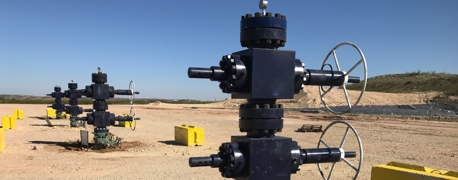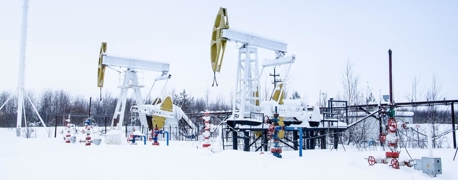The Dangers of Orphaned Oil Wells

An estimated 9 million Americans live within a mile of orphaned oil wells – and that’s just the documented wells. According to the Environmental Protection Agency (EPA), there are likely about 3 million abandoned oil and gas wells scattered across the United States. Approximately two-thirds of these have not been properly plugged and decommissioned.
When an oil well is abandoned, it may emit toxins and pollution that contaminate groundwater, affecting local communities and the environment. Abandoned and orphaned wells are also considered major contributors to greenhouse gas emissions, spurring the creation of several state and federal programs aimed at decommissioning such wells before they can cause further harm. Unfortunately, many of these programs lack the funding and personnel to be effective on a broad scale.
Abandoned and orphaned wells are a serious problem in the United States, and yet it seems that little is being done to address them. From property owners who have long-abandoned wells on their land to communities located near large, old oilfield operations, countless people who are impacted by orphaned wells are running into obstacles when they try to get these wells plugged and decommissioned.
By digging a little deeper, we can shed light on the scope of the issue and what can be done about it.
What Is an Orphaned Well?
The first commercial oil well in the United States was drilled in 1859 on the banks of Oil Creek near Titusville, Pennsylvania. Since that time, millions of wells have been drilled across the country, primarily in the oil-rich states of Texas, Alaska, California, North Dakota, Oklahoma, New Mexico, Wyoming, Utah, Colorado, and Louisiana. They remain to this day – even the wells that have not been producing for decades. Some are more than a century old, and most that date back to the beginning of the 1900s and earlier are not documented at all.
A well is considered abandoned if its owner or operator has taken it out of production. It is considered orphaned if its owner cannot be located or no longer exists. These wells now sit, inactive, for years, decades, or even more than a century.
Methane Emissions & Other Hazards of Orphaned Wells
When an oil or gas well is no longer productive enough to be economically viable, the owner is required to properly plug the well. This is a lengthy process that can take days, a week, or even longer depending on the depth of the well and other factors. Typically, cement plugs are set in the wellbore at specific intervals to prevent the flow of fluid. When a well is properly decommissioned, it should not pose a significant hazard to the environment and any people who live or work nearby.
Unfortunately, many wells are shoddily plugged or are not plugged at all. Their owners may become bankrupt, or companies may be sold or dissolved. Some oil and gas companies make the conscious decision to abandon wells or may claim to “temporarily” abandon operations, never to return. Even wells that have been plugged may have been decommissioned decades ago, before current regulations were in place. The result? Millions of abandoned wells litter U.S. soil, presenting serious risks of contamination and even explosions and fires.
Improperly plugged or decommissioned oil and gas wells are essentially open holes in the ground. They may release toxins like methane, arsenic, benzene, and hydrogen sulfide into the environment, even when they are no longer productive. They can cause fires and explosions. Even a small leak from a single well could have a tremendous impact over years or decades, affecting the soil and groundwater and causing air pollution.
Methane is one of the biggest threats posed by orphaned oil wells. The odorless gas can seep into homes, offices, schools, and other nearby buildings without a trace, causing serious health problems and symptoms like nausea, weakness, vomiting, and convulsions. In high concentrations, methane exposure can cause coma and even death. It is also highly explosive.
Then there’s the connection between methane emissions from abandoned wells and global warming, which researchers estimate cause climate damage that’s about equivalent to consuming about 16 million barrels of crude oil every year. The more than 3 million abandoned oil and gas wells in the United States alone are estimated to have emitted 281 kilotons of methane – just in 2018. According to the EPA, methane accounts for about 20% of global emissions and is 25% more capable than carbon dioxide of trapping heat in the atmosphere.
Abandoned Wells Pose Dangers to Nearby Homes, Communities & Workers
In January 2019, construction workers at a site in Marina Del Rey, California, experienced a near-death experience when they dug into an abandoned oil well. The resulting blowout sent a mixture of natural gas, mud, and water shooting up into the air, and one worker was sprayed before he was able to escape using a safety rope.
In 2017, a man and his brother-in-law were killed in a house explosion in Firestone, Colorado as the result of gas leaking from a severed flow line. The line was associated with an abandoned, inactive oil well owned by Anadarko Petroleum. Local authorities believe that the leak started when a tank battery was moved to build the subdivision where the house was located.
A school in the small town of Midwest, Wyoming closed in 2016 after teaching staff and students complained of headaches and smelled gas-like odors. Air quality tests confirmed the presence of high concentrations of benzene and carbon dioxide, which were associated with an abandoned well nearby; carbon dioxide was finding its way into the school through small underground cracks. Benzene levels were found to be 200 times the recommended limit; carbon dioxide levels were 20 times the recommended limit. It took more than a year for the abandoned well to be plugged and the school to reopen.
In 2011, a house in McKean County, Pennsylvania, suddenly exploded. Luckily, the owner was outside when his home burst into flames. Investigators determined that the explosion was caused by a methane leak from an abandoned well drilled back in 1881. The well was located about 300 feet from the home.
These are just a few incidents involving blowouts and explosions at abandoned oil and gas wells. There are countless other stories of ranchers dealing with old, abandoned wells contaminating their groundwater, killing cattle, and causing mysterious health problems among family members. People are living and working in communities located near abandoned oilfields that report smelling gas in the air and experiencing frequent headaches, asthma, nausea, and other symptoms often associated with toxic exposure.
The Time & Expense of Plugging an Abandoned Oil Well
The cost of plugging an abandoned oil well is significant. Some have estimated that it will cost upwards of $300 billion to plug every abandoned well in the United States. According to one study, the average cost of plugging a well is about $20,000. For deeper wells, however, the costs increase by about 20% for every additional 1,000 feet. The average cost of plugging and addressing surface reclamation is about $76,000 per well. Specific costs may vary depending on the depth of the well, its age, where the well is located, and more. In rare cases, plugging and decommissioning certain wells could cost up to $1 million.
Who shoulders this financial burden? Logically, it should be the company that owned or operated the well. Unfortunately, orphaned wells are named such because they have no clear owners. With that in mind, would landowners be responsible? What about the government?
Accountability for plugging wells may vary depending on the jurisdiction, but if the well is considered abandoned and its owner/operator can be located, they would be liable. If a well is classified as orphaned because its owner cannot be located, the state government is responsible – if the landowner did not have previous control over drilling operations. This landowner immunity may vary depending on the state and the specific circumstances.
In January 2022, the Biden administration announced that 26 states in the U.S. aim to apply for some of the $4.7 billion budgeted in the Bipartisan Infrastructure Law for the clean-up and decommissioning of abandoned oil and gas wells nationwide. This is part of President Biden’s commitment to address global warming by reducing methane emissions. Such cleanup measures would also produce new jobs and help communities located near abandoned oilfields and wells.
This is a good start, but plugging millions of abandoned wells is bound to cost more than $4.7 billion (as astronomical as that figure may be). Oil and gas companies must be held responsible not only for running safe drilling operations but for properly plugging and shutting down wells that are no longer viable. There has to be more accountability and more intervention.
At Arnold & Itkin, we stand for landowners, workers, and all people who have been adversely affected by the unethical operations of companies that are more interested in their profits than the environment, the people they employ, and the communities where their wells and plants are located. When explosions happen, we stand up for those who have been injured or lost loved ones. When wells blow out, we fight for answers and accountability. Our attorneys do everything it takes to help good people who have found themselves in the worst situations.
To find out how we can help you, call (888) 493-1629 or contact us online.


